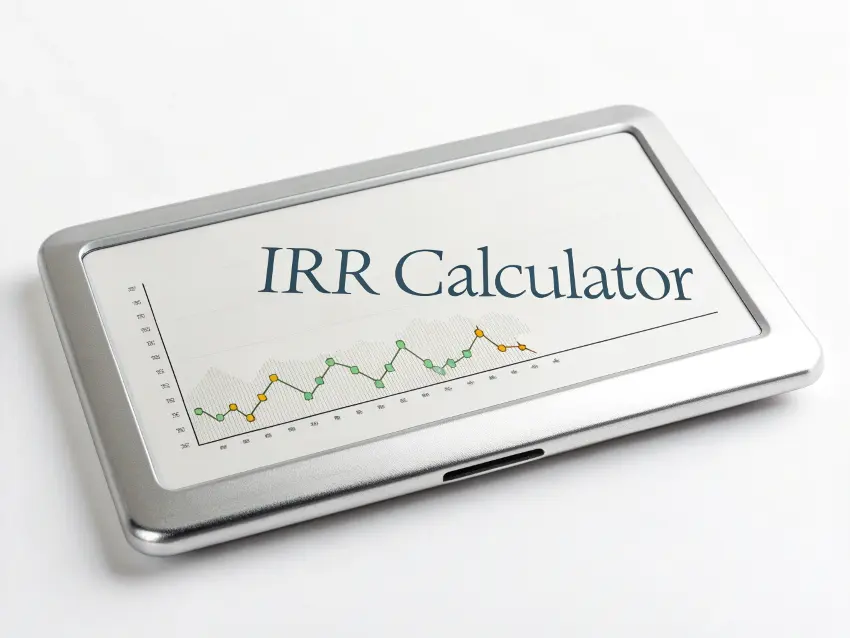IRR Calculator
Calculate the Internal Rate of Return (IRR) for investment projects

Internal Rate of Return
Formula:
Σ (CFₙ / (1 + IRR)^n) = 0
Where:
- CFₙ = Cash flow in period n (CF₀ is the initial investment)
- IRR = Internal Rate of Return
- n = Period number
Internal Rate of Return (IRR) is the discount rate that makes the net present value (NPV) of all cash flows equal to zero. It represents the annualized rate of return on an investment.
IRR is commonly used to evaluate the attractiveness of investments or projects. A higher IRR indicates a more desirable investment, assuming all other factors are equal.
Typically, a project is considered acceptable if its IRR is greater than the required rate of return or cost of capital.
$
This is typically a negative value since it represents money going out
Cash Flows
Year 1
$
Year 2
$
Year 3
$
Year 4
$
Year 5
$
$
%
Used to calculate NPV at a specified discount rate
Results
Internal Rate of Return (IRR):
Could not calculate IRR
Net Present Value (NPV) at 10% discount rate:
$0.00
Understanding IRR
What is a good IRR?
The "good" IRR threshold depends on your required rate of return, which is often the cost of capital or alternative investment opportunities. Generally:
- IRR < Required Rate: Investment is not financially attractive
- IRR > Required Rate: Investment is financially attractive
- IRR = Required Rate: Investment is neutral (NPV = 0)
Industry Benchmarks
| Industry | Typical Expected IRR Range | Risk Level |
|---|---|---|
| Real Estate (Commercial) | 8-12% | Moderate |
| Technology Startups | 25-35%+ | High |
| Private Equity | 15-25% | Moderate-High |
| Infrastructure Projects | 6-10% | Low-Moderate |
| Energy (Renewable) | 7-12% | Moderate |
Limitations of IRR
- IRR assumes that interim cash flows can be reinvested at the IRR rate, which may not be realistic.
- For projects with unusual cash flow patterns (switching between positive and negative), multiple IRR values may exist.
- IRR doesn't consider the scale of the investment - a high IRR on a small project might be less valuable than a lower IRR on a larger project.
- For mutually exclusive projects, the NPV method may lead to better decisions than the IRR method.